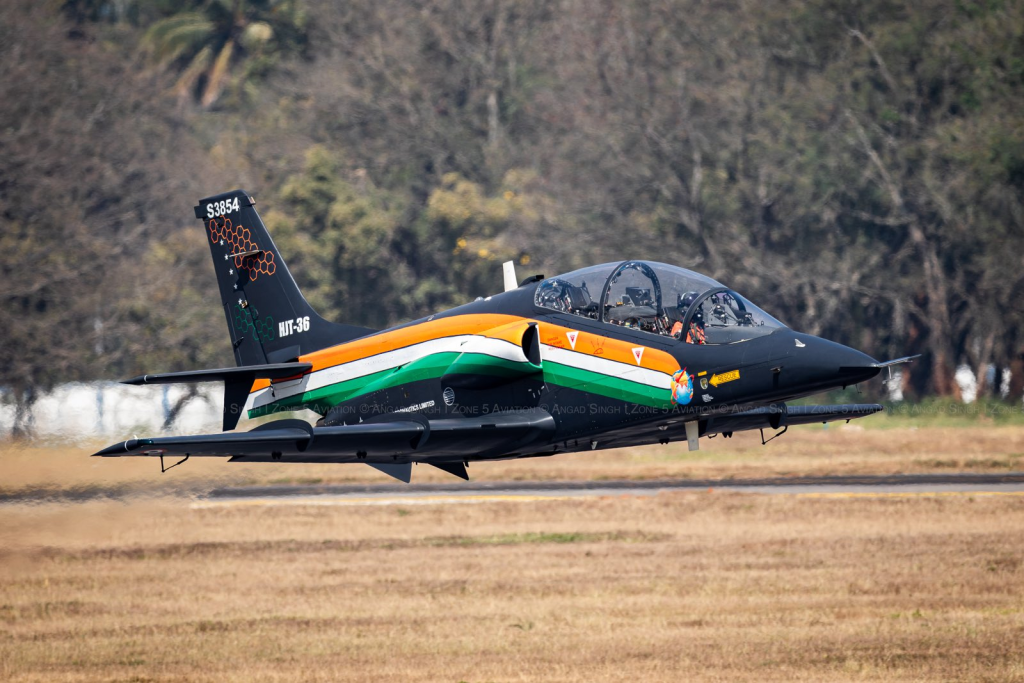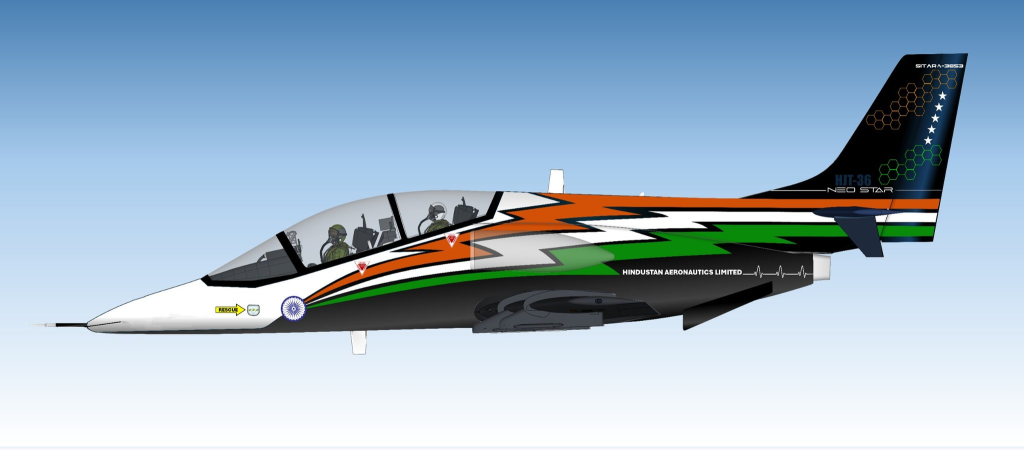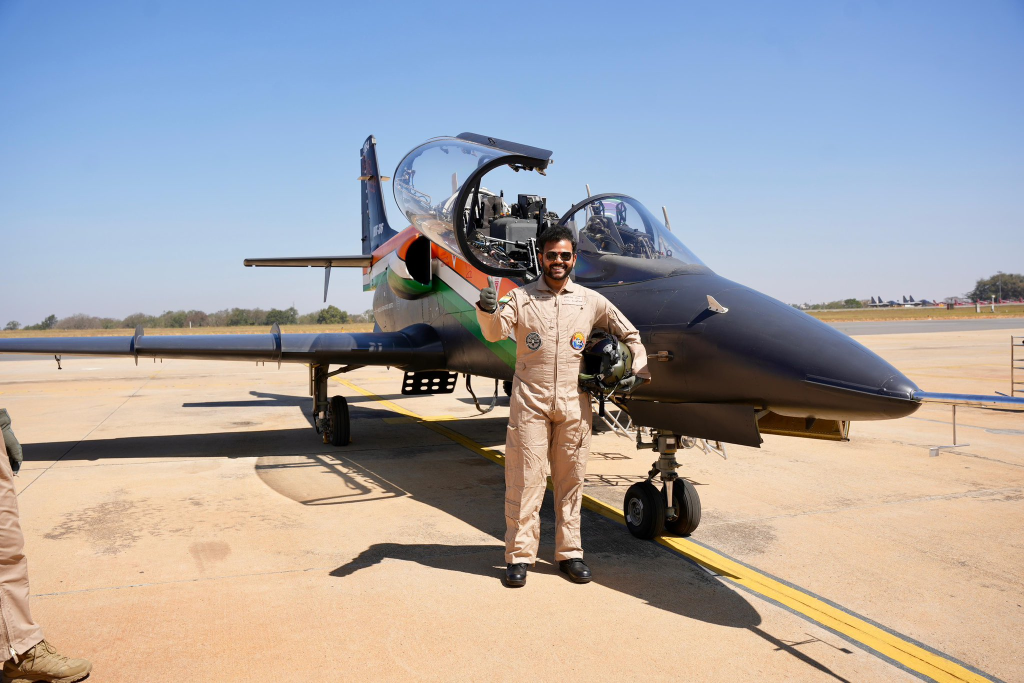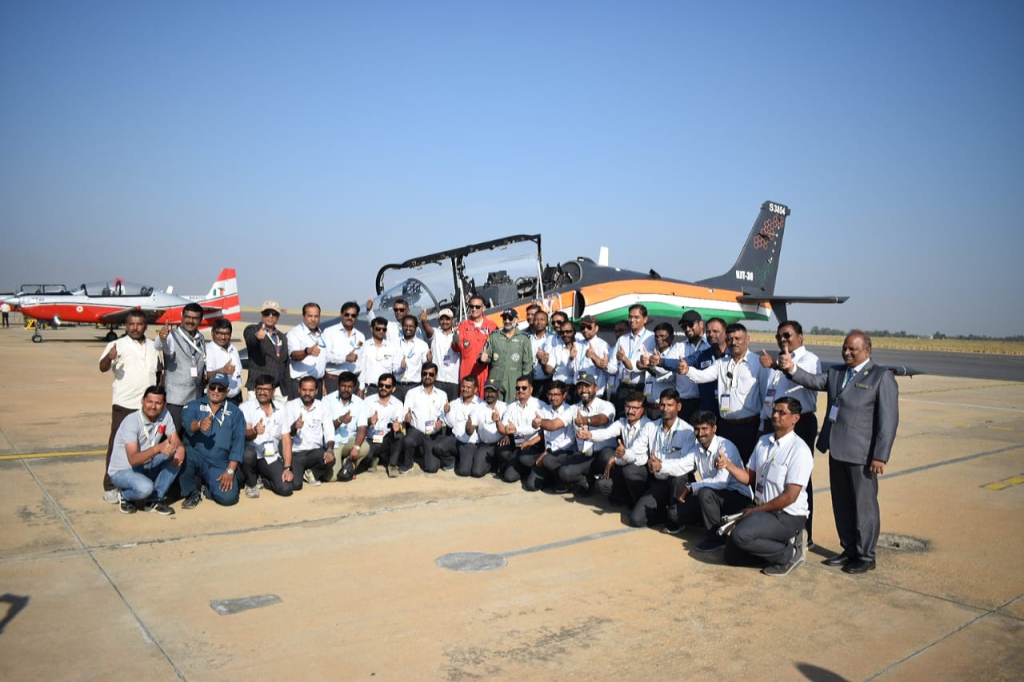
After years of uncertainty and near abandonment, Hindustan Aeronautics Limited (HAL) has successfully resurrected its intermediate jet trainer, the HJT-36 Sitara, rebranded last week as ‘Yashas’—a name symbolising its success and readiness for operational service. This long-troubled aircraft, which had faced severe developmental setbacks, was finally unveiled in its new form at Aero India 2025, where it delivered a very impressive aerial performance. With renewed confidence from the Indian Air Force (IAF), the Yashas is now poised to play a critical role in bridging India’s long-standing gap in Stage-II pilot training.
The IAF has asked HAL to write up the paperwork to lease 4 Yashas trainers for an in-service evaluation, after which the IAF could commit to a large number of these aircraft.
The HJT-36 (HJT stands for Hindustan Jet Trainer) project began in the late 1990s as part of HAL’s vision to develop an indigenous Stage-II jet trainer for the IAF, intended to replace the aging fleet of HJT-16 Kiran aircraft. It was to be a bridge between basic propeller trainers like the HPT-32 Deepak and the BAE Hawk Mk.132 lead-in jet trainer.

However, the program soon encountered major technical roadblocks, including:
- Spin Recovery Issues – One of the aircraft’s most significant flaws was its inability to recover from spins, a critical requirement for any trainer aircraft. The instability in this aspect made it unsafe for pilot training.
- Engine and Powerplant Problems – The initial SNECMA Larzac 04-H-20 engine was found inadequate for the aircraft’s needs, leading to the eventual adoption of the Russian AL-55I jet engine, which itself had integration challenges.
- Avionics and Cockpit Visibility – The original design of the aircraft had cockpit visibility limitations, which affected pilot situational awareness. Given that trainer aircraft must provide clear visibility for instructors, this was a serious flaw that had to be corrected.
- Structural and Weight Issues – Over time, HAL also had to modify the airframe and weight distribution, as the initial configurations were not optimal for sustained jet training.

Due to these ongoing issues, by the mid-2010s, the HJT-36 program had lost momentum. The IAF, growing increasingly frustrated with delays, turned to foreign alternatives, relying heavily on Pilatus PC-7 Mk II trainers for Stage-I training and extending the role of the Hawk advanced jet trainers for roles that should have been covered by an intermediate trainer.
Rather than abandoning the project entirely, HAL made a determined push to resolve the aircraft’s shortcomings. This effort culminated in a comprehensive redesign, leading to the birth of the HJT-36 ‘Yashas’, which was officially unveiled at Aero India 2025, sporting several key improvements and fixes that convert it from a troubled airplane to one that HAL says is fully ready to plug into the IAF’s requirements.
- Advanced Engine Control: The new AL-55I jet engine now features Full Authority Digital Engine Control (FADEC), ensuring optimized thrust management, fuel efficiency, and enhanced safety during high-risk maneuvers.
- Improved Cockpit and Visibility: The aircraft now features a stepped-up rear cockpit and drooped nose design, vastly improving pilot visibility and situational awareness, essential for effective training.
- Modern Avionics: The cockpit now boasts a glass cockpit system, including Multifunction Displays (MFDs), a Head-Up Display (HUD), and advanced navigation and training systems, bringing it up to contemporary standards. According to at least one analyst, the Yashas ‘sports the largest display area of all current fighter/trainer aircraft in the IAF’. Lead test pilot and developer of the HJT-36 Group Captain H.V. Thakur says, “The upgraded HJT-36 Yashas has a full glass cockpit with no conventional instruments or switches on the main instrument panel. Yashas has an AI powered voice command system for enhanced training and contemporary ops.”
- Aerodynamic Refinements: HAL focused heavily on modifying the aircraft’s aerodynamics to correct its stall and spin recovery issues, successfully demonstrating safe recovery procedures in rigorous testing.
The successful redesign means that HAL is now able to pitch Yashas as a fully capable Stage-II trainer, capable of preparing IAF pilots for more advanced aircraft like the incoming Tejas Mk-1A, Rafale, Su-30MKI and Mirage 2000.

At Aero India 2025, the HJT-36 Yashas performed an impressive flight demonstration, showcasing its agility, stability, and improved handling. This marked a pivotal moment for HAL, as the aircraft’s troubles had long been a sore point in India’s indigenous defence aviation sector. Following its successful performance, the IAF has renewed its interest in the aircraft. Beyond the aforementioned leasing stretch that should begin this year, the IAF could potentially procure at least 85 units, with the planes to be built in Bengaluru. There are even calls for the HJT-36 to be handed over to a private sector production partner so HAL can focus on Tejas deliveries.
This development is particularly significant as the IAF has long been making do with an inadequate training structure, where rookie pilots had to transition directly from basic turboprop trainers (Pilatus PC-7 Mk II) to advanced jet trainers (Hawk Mk 132)—a major gap in the training ecosystem. In 2017, BAE and HAL had proposed an ‘Advanced Hawk’ product to help the IAF sharpen training and cut costs, but this never found traction.
- Filling the Stage-II Training Gap: With the HJT-16 Kiran all but retired and no indigenous replacement in place, the Yashas arrives just in time to fill the crucial intermediate training role.
- Reducing Dependence on Foreign Trainers: The Pilatus PC-7 procurement was embroiled in corruption allegations, and India has been seeking ways to move away from reliance on foreign aircraft for pilot training.
- A More Seamless Pilot Progression: With the Yashas, the IAF can finally establish a logical progression for its pilots—starting with Stage-I training on the PC-7, moving to Stage-II training on Yashas, and then advanced training on the Hawk Mk 132, ensuring a smoother transition to frontline fighter aircraft.
It’s an especially big year for the IAF trainer fleet. Apart from the HJT-36’s rebirth and readiness, the IAF will begin receiving the first of 70 HTT-40 Stage-I trainers from HAL in September this year. The IAF placed an $830 million order for the planes in 2023. At the last Aero India, HAL had unveiled a cleansheet supersonic trainer called HLFT-42, though that program wasn’t visible in the offerings at this year’s show.
The revival of the HJT-36 as ‘Yashas’ is a minor miracle — testament undoubtedly the resilience of a team at HAL and India’s sustained and difficult push for homegrown military equipment. After years of uncertainty and technical struggles, the aircraft has finally turned a corner, emerging as a viable and much-needed solution to one of the IAF’s most turbulent requirement spheres.

While HAL will doubtless focus on ensuring the IAF’s time with leased Yashas trainers yields a full purchase order, the HJT-36 team has kept the possibility of arming the platform (with rocket pods and a 12.7-mm gun pod) and spinning off a light attack/COIN aircraft since at least 2014. You can read about that effort here. It is understood that a weaponised version of the Yashas could be made available to both domestic and international customers.
